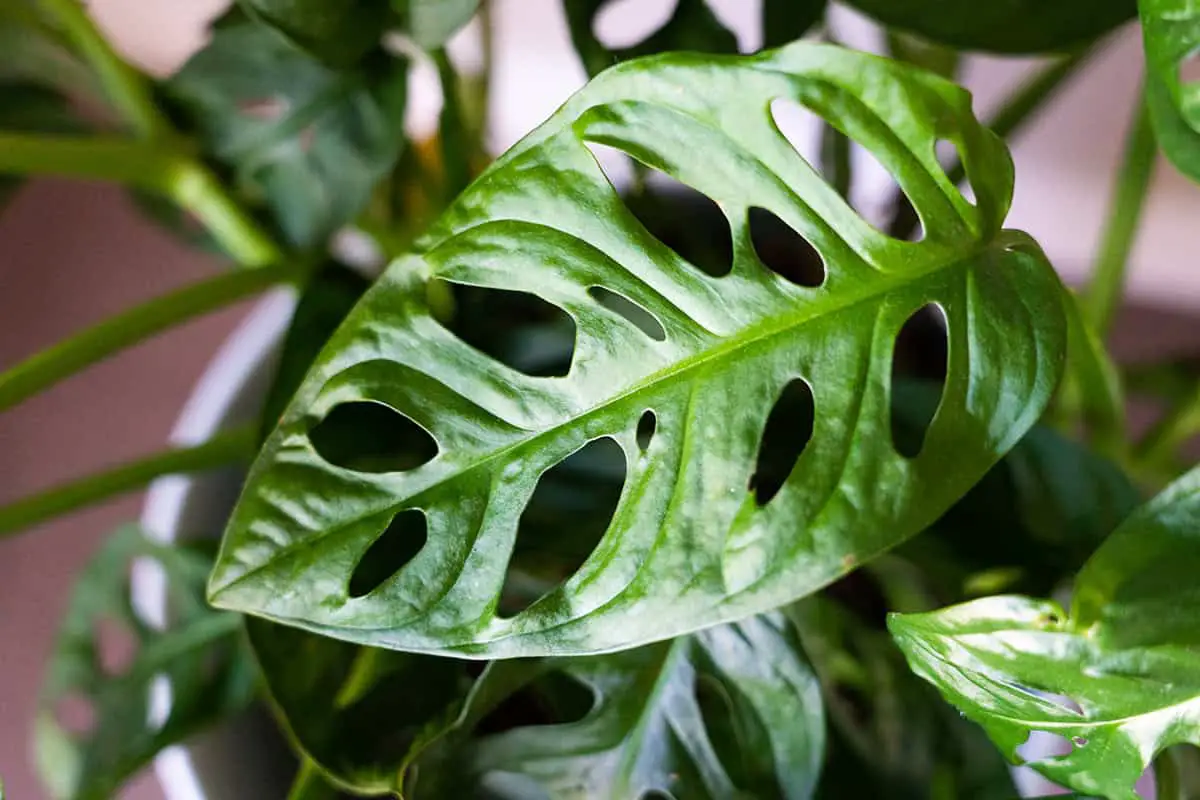You’ve recently brought home a Swiss cheese plant, captivated by its unique, hole-filled leaves. But now, you’re wondering how to keep it as vibrant and healthy as the day you bought it. With a few straightforward care tips, you can ensure your plant thrives. This guide will explore everything you need to know about Swiss cheese plant care.
Table of Contents
Light
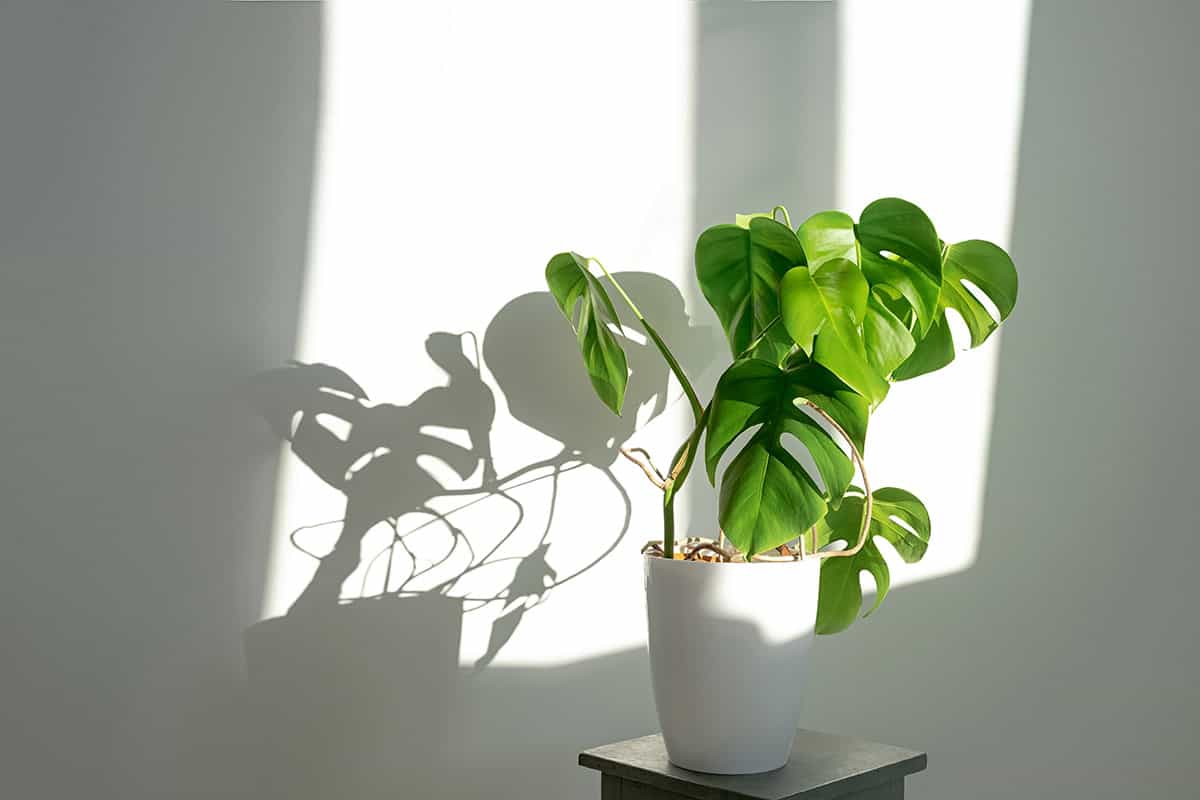
The Swiss Cheese Plant thrives in bright, indirect light. Place yours near a window where sunlight does not directly hit the leaves. Too much direct sunlight burns the leaves, leading to brown spots and patches. Yet, insufficient light causes stunted growth.
Your plant prefers a steady source of light. It mimics the dappled sunlight of its natural rainforest habitat. East or west-facing windows are ideal locations. Ensure the light is consistent throughout the day for optimal health.
Rotate your plant regularly. This practice encourages even growth on all sides and prevents the plant from reaching toward the light source excessively. Keep an eye on leaf color, as it indicates light exposure quality. Deep green leaves suggest your plant is receiving adequate light.
Soil
For your Swiss Cheese Plant to thrive, it needs well-draining soil. Choose a peat-based potting mix with perlite to increase aeration and moisture retention. Ensure the soil is loose to help roots spread easily. If the soil is too dense, the roots may rot.
In regions with a warm climate, your plant will do well outside. You can prepare the soil outdoors by removing grass and digging a spacious hole. The University of Florida IFAS Extension recommends a hole three to four times the diameter and three times the depth of the plant’s container. This allows easy root expansion.
Avoid using pure garden soil for indoor plants. It compacts over time and may contain pathogens harmful to your Monstera. Indoor Swiss Cheese Plants require the potting mix to remain moist but not soggy. Test the soil moisture by pressing your finger into the soil before watering again.
Water
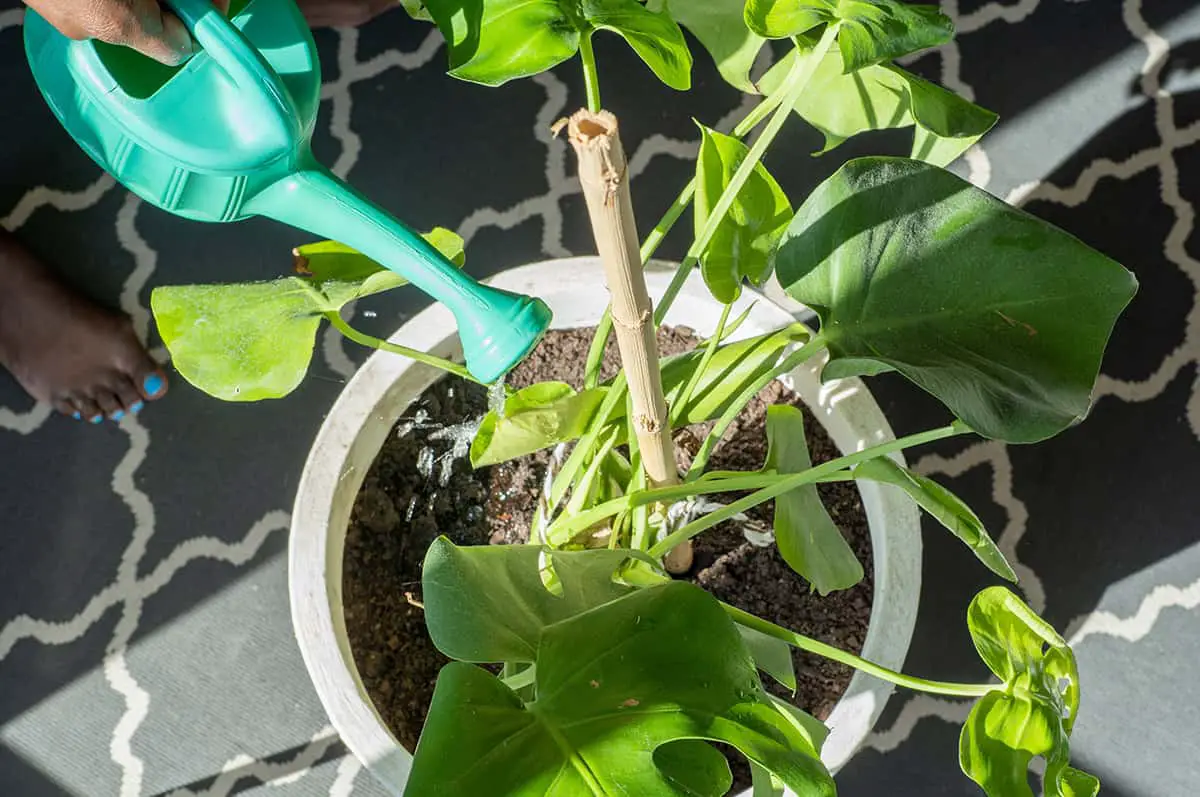
Proper hydration is key to maintaining a healthy Swiss Cheese Plant. Your Monstera deliciosa needs consistent moisture, but it’s crucial to avoid overwatering. Aim to keep the soil slightly moist, but never soggy. Examine the top inch of soil with your finger before adding water. If it feels dry, it’s time to water your plant.
Water your Swiss Cheese Plant less frequently during the cooler months, as growth slows and the plant requires less moisture. During the active growing season, typically spring and summer, you can expect to water more often to support its growth. Always ensure excess water can drain to prevent root rot.
Environment plays a role in your watering schedule as well. High humidity and warmer temperatures may mean your plant needs water more often. If you’re in a drier, cooler climate, your plant will need water less frequently. Adjust your schedule to accommodate these conditions, keeping the soil’s moisture at an optimal level for plant health.
Temperature and Humidity

For your Swiss Cheese Plant to thrive, maintaining the right temperature and humidity is crucial. This tropical plant needs a warm climate, ideally between 65°F and 85°F (18°C to 29°C) during the day. At night, temperatures should not drop below 60°F (15°C) to avoid stress.
High humidity is just as important as warm temperatures for the Swiss Cheese Plant. Aim for humidity levels between 60% to 80%. If your home is dry, especially in winter, there are easy ways to increase humidity. You can use a humidifier or place a water tray near your plant. Grouping plants together or placing your Swiss Cheese Plant in a well-lit bathroom can also boost humidity.
Fertilizer
Proper fertilizer use is crucial for your Swiss Cheese Plant’s growth. Begin by introducing the fertilizer in early spring when your plant leaves dormancy and enters a growth phase. You should aim to fertilize every month during spring and summer, as these are the optimal growth periods for the Swiss Cheese Plant.
Select a balanced, water-soluble fertilizer. Look for an even ratio like 10-10-10 or 20-20-20, which provides a mix of nitrogen, phosphorus, and potassium. These elements support leaf development, root growth, and overall plant health. Dilute the fertilizer to half the recommended strength to avoid overfeeding, which can harm the plant.
In fall and winter, reduce the frequency of fertilization. During these cooler months, the plant grows more slowly. You can fertilize every other month or stop altogether until spring returns. Monitor your plant’s condition to adjust feeding schedules accordingly.
Propagation
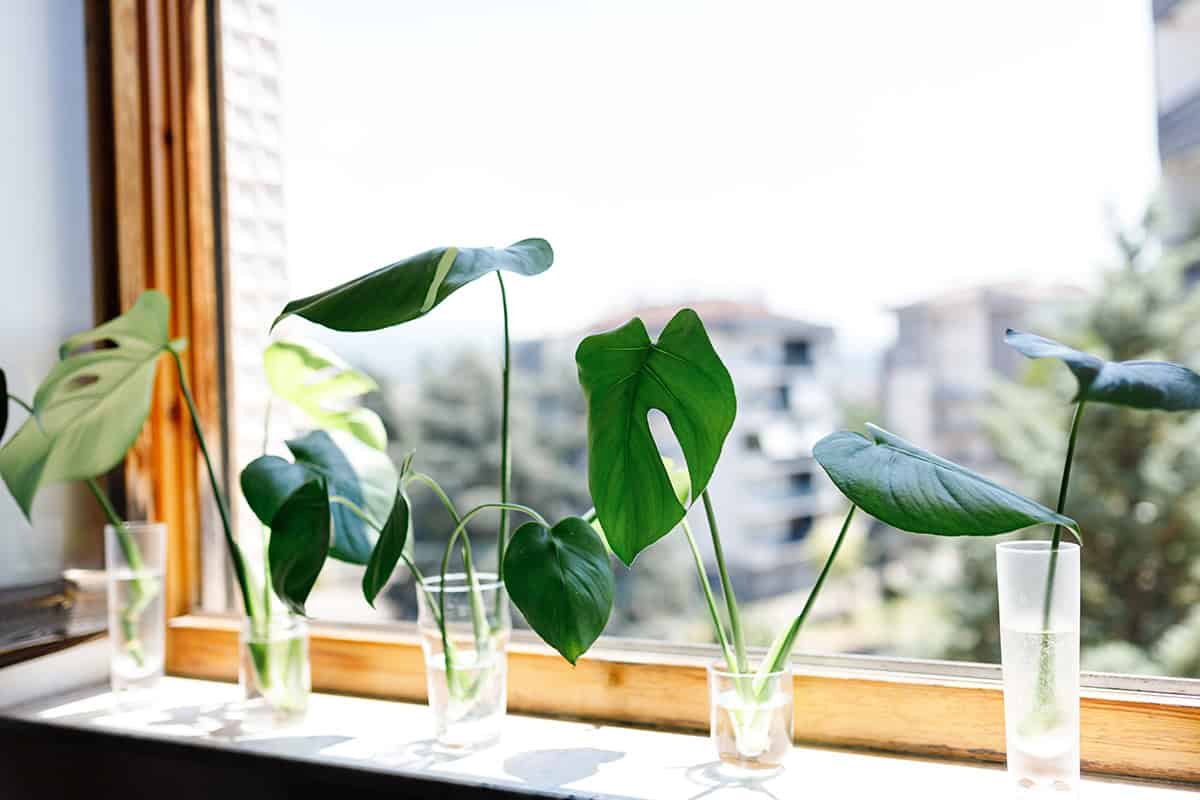
To propagate the Swiss Cheese Plant, begin by selecting a healthy stem. This stem should have at least one node, which is a small bump from which roots grow. Make a clean cut using a sharp knife or scissors just below this node. It’s vital to use sterilized cutting tools to avoid introducing diseases to the plant.
After cutting, prepare a pot with a mix of peat and perlite. This will help ensure good drainage and aeration for the roots. Next, place the cut end of the stem into the soil just deep enough to support the cutting standing upright. Press the soil gently around the stem to provide stability.
Keep the soil evenly moist but not waterlogged. Creating high humidity around the cutting improves the chances of successful root development. You may cover the pot with a plastic bag to retain moisture but remember to open it regularly to prevent mold growth.
Bright, indirect light supports the growth of your new Swiss Cheese Plant without risking leaf burn. Within a few weeks, you will notice roots forming. Now, your propagated Swiss Cheese Plant is ready to grow into a mature, climbing vine like the mature plants you often admire. For supportive information regarding propagation, you can read about the methods used at the UMN Extension.
Pruning
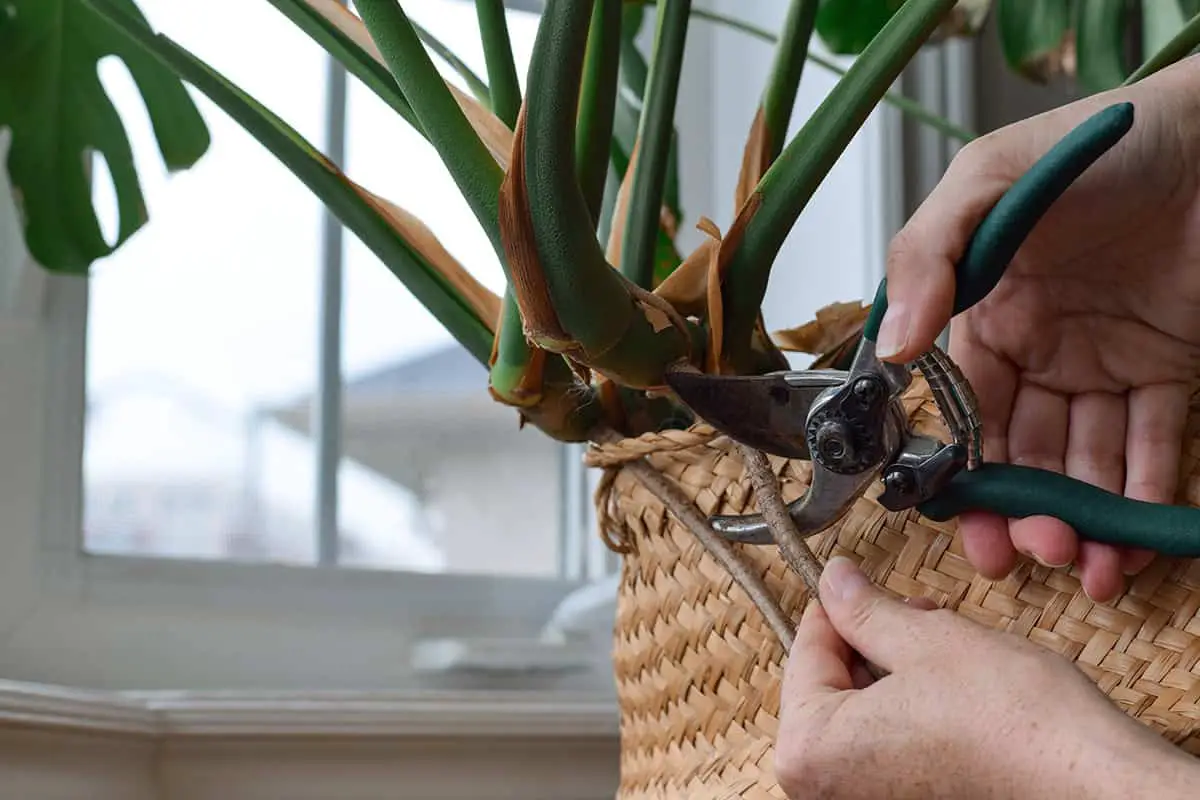
When tending to your Swiss Cheese Plant, you need to prune it occasionally. This helps to manage the size and encourages healthy growth. Look for yellowing leaves or awkwardly shaped vines. Using sharp, clean scissors or pruning shears, cut these parts right above a leaf node. You will promote more foliage this way.
Pruning is vital for your plant’s well-being. It keeps the plant from overgrowing its space and removes potential pests or diseases. Always prune during spring or summer, as these are the seasons when the plant is in its active growth phase. Avoid pruning when the plant is dormant—usually in winter.
Moreover, never cut more than 25% of the foliage when pruning your Swiss Cheese Plant. Too much pruning can shock the plant, hindering its growth. After pruning, clean up any leaf debris to keep your area neat and prevent any potential pest problems.
Potting and Repotting

When you repot your Swiss cheese plant, choose a pot that is two inches larger in diameter than the current one. This allows for healthy root growth. Make sure the new pot has drainage holes to prevent waterlogged soil, which can cause root rot.
For the potting mix, select a well-draining soil. Your Swiss cheese plant thrives in peat-based compost due to its moisture retention. Place a shard over the pot’s drainage hole to minimize soil leakage.
If you notice the leaves of your Swiss cheese plant yellowing, it could be a sign it’s time to repot. Do this preferably in the spring when the plant is entering a period of active growth.
After repotting, water the plant thoroughly and place it in bright, indirect light.
Common Problems & Troubleshooting
When you notice your Swiss Cheese Plant showing signs of distress, it often relates to water, light, or pests. If the leaves turn yellow, you might be overwatering. Ensure the soil is well-drained and only water when the top inch feels dry. For brown leaf tips, your plant could be thirsty or suffering from low humidity. Regular watering and misting can help.
If leaves lack the characteristic holes or fenestrations, it’s usually a sign of inadequate light. Place your Swiss Cheese Plant in a spot with bright, indirect sunlight. Direct sunlight can scorch the leaves, causing them to turn crispy. Move the plant out of the sunlight’s direct path to avoid this.
Pests such as spider mites and scale insects can attack your plant. You’ll see fine webs or bumps on stems and leaves if they’re present. Wipe the leaves with a mild soapy solution to remove these pests. It’s important to inspect your Swiss Cheese Plant regularly to catch these issues early.
Root rot can occur if the pot lacks drainage or is left in standing water. A healthy root system is critical. To solve this problem, repot your plant into fresh, well-draining soil and a pot with drainage holes.
Monstera Deliciosa Varieties
Monstera Deliciosa varieties are cherished for their unique foliage and variegation patterns. You’ll find the differences among these types both striking and elegant.
Monstera Deliciosa ‘Albo-Variegata’

This variety displays a bold contrast with white and green on its foliage, making it a stunning visual piece in your home. ‘Albo-Variegata’ is known for the unpredictability of its patterns, where no two leaves are the same.
Monstera Deliciosa ‘Thai Constellation’

‘Thai Constellation’ offers a more consistent variegation, resembling a starry sky. Its creamy-yellow variegation scatters across the leaf surface. You will appreciate its luminous quality, especially under proper lighting.
Monstera Deliciosa ‘Borsigiana’
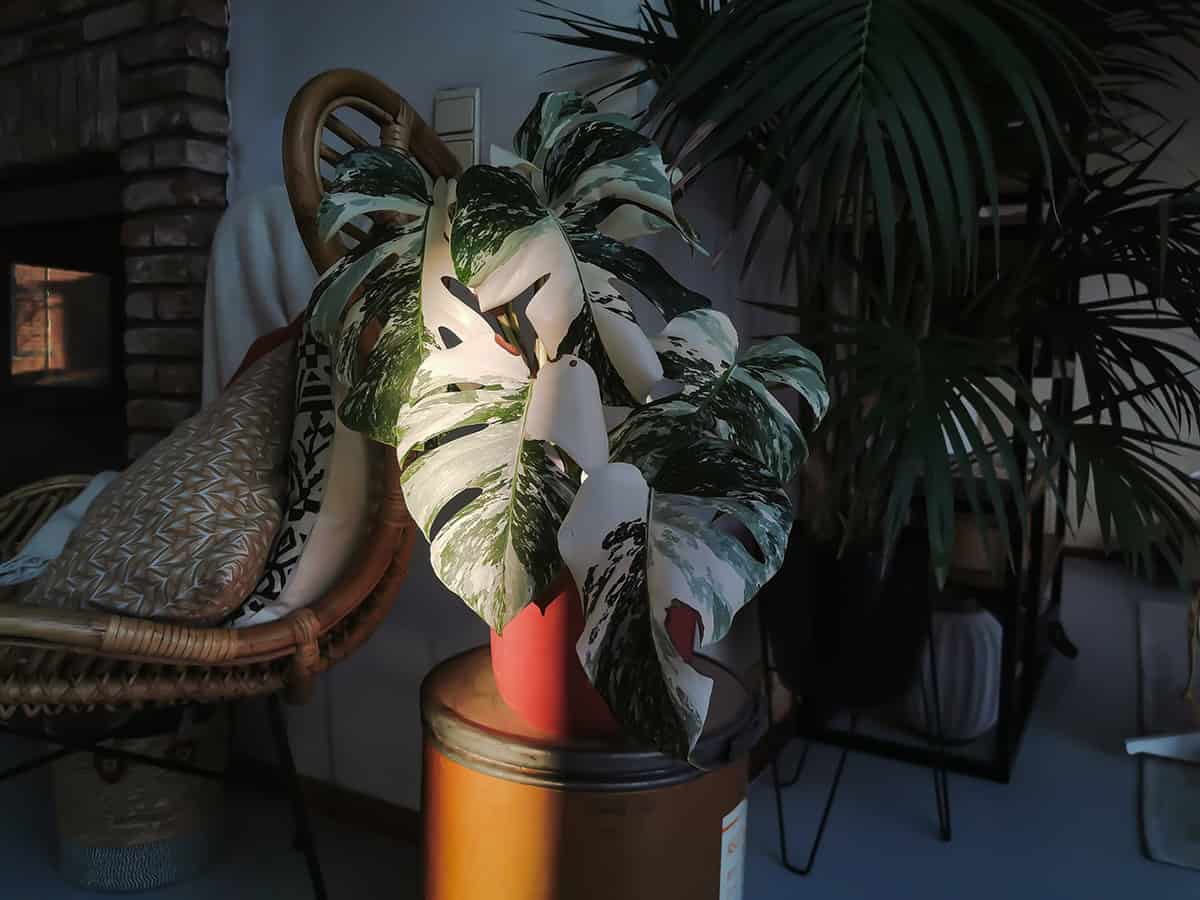
The ‘Borsigiana’ is a smaller and more manageable version of the classic Monstera Deliciosa. Its leaves develop the same characteristic splits and holes but on a more compact plant, perfect if your space is limited.
